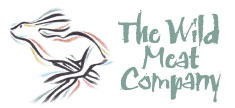Celebrating Britain's Most Traditional Game Dish: Jugged Hare
by Robert Gooch August 04 2025
August 1st marks the official return of hare season – and with it, the opportunity to experience one of my favourite childhood meals. For those new to game meat, hare represents something special in British cuisine – a connection to culinary heritage, embodied most famously in the dish that was my introduction to serious game cooking: jugged hare.
Understanding Hare: The Bold End of Game Flavour

Hare meat sits at what I call "the Vindaloo end of the game meat spectrum" – using curry as my benchmark for intensity of flavour. This is rich, dark meat with a pronounced gamey character that can be either celebrated or mellowed depending on your preparation method.
The flavours are complex, earthy, and satisfying. Unlike its milder cousin the rabbit, hare demands respect and rewards those willing to embrace its robust personality.
My Introduction to Jugged Hare
Jugged hare was my absolute favourite game meal as a youngster, prepared by my grandmother in her country kitchen. This isn't just a casserole – it's a slow, careful cooking method that uses the hare's own blood to create a sauce of exceptional richness and depth. The dish is popular beyond Britain's shores, particularly in Germany and Holland, with each region adding its own touches.

(Photo: My grandmother, Patricia Gooch, and me (Robert Gooch) are pictured above on the left)
Learning from My Grandmother
My grandmother was particular about her methods, especially when it came to preparing the hare properly. Every step mattered, and she had specific reasons for doing things in a certain order.
The Preparation Process
The process begins with the whole hare. Unlike rabbit, which is gutted immediately after dispatch, hare is left whole to benefit the flavour of the meat and retain blood in the body.
The hare had to be hung properly and prepared in a particular sequence – skinned before gutting rather than the reverse. This made the job harder, but it ensured we could collect every drop of the blood that would later enrich the sauce. The liver and the blood (with a touch of vinegar added to prevent coagulation) were retained and then the hare would then be jointed carefully - four legs and the saddle cut into manageable pieces.
The Cooking Method
While I don't have my grandmother's exact recipe anymore, the essential method remains consistent with traditional approaches across different households.
The foundation is a marinade of typically a bottle of cheap red wine, with olive oil, sliced onion, crushed juniper berries, garlic, bay leaf, fresh thyme, and black pepper. The hare is then marinaded overnight in the fridge to allow the flavours to penetrate the meat thoroughly.
The joints would be removed from the marinade and dried well before being dusted with seasoned flour and browned in butter or lard alongside small onions (200g) and strips of streaky bacon (200g). Once everything achieved a good colour, the fat was drained and herbs (thyme, bay leaf, parsley), the marinade and 250ml of good stock were added.
The slow cooking took about three hours in a casserole at 150°C until the meat became very tender. But the final transformation happened just before serving, when the reserved liver was mashed with some of the casserole juices, combined with the saved blood, and stirred back into the dish along with 70ml of port, 1 tablespoon of redcurrant jelly, and lemon juice to taste.
The result was a sauce of remarkable complexity – glossy, deeply flavoured, with an almost velvety richness that can't be achieved any other way.

How to Serve Jugged Hare
Traditionally, jugged hare comes with forcemeat balls, though I prefer the simplicity of mashed potatoes and red cabbage. The dish doesn't need much embellishment – the hare itself provides plenty of flavour.
Final thoughts
Jugged hare represents something that's becoming rarer: a dish that demands time and respect for ingredients. It's not fast food – it's slow food that rewards patience. When I prepare jugged hare today, I'm reminded of my grandmother's kitchen and those early lessons about treating good ingredients properly.
Beyond Jugged Hare - more hare recipes
While jugged hare remains my preferred preparation, this meat adapts well to both traditional and modern cooking methods. You can explore our hare recipes, from simple roasted saddle to contemporary BBQ skewers.
Ready to try wild British hare?
Our whole hare, haunches and saddle are available to order from 1st August through 28th February. Although we work hard to maintain availability throughout the open season, demand sometimes outstrips supply. If you find certain hare products aren't available, leave your email address in the notification box provided, and we'll send you an alert when stocks are replenished.

